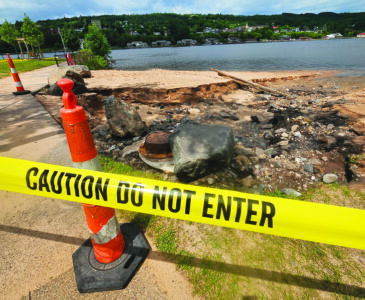Scene from above: Foliage patterns near Paavola

Google Images Southwest of Paavola, this patch of ground is covered with fractal-like patterns and lines, as seen from this 2018 overhead image.
Southwest of the village of Paavola, there’s a patch of ground covering several acres that shows interesting fractal-like patterns in the foliage, depending on the time of season. Seen above in a 2018 Google Maps image, the center of the fractal pattern is occupied by a brown lump of sticks or logs.
Is this a natural phenomenon, or is something or someone drawing the patterns here? What are the lumps in the center of the pattern? Are they the source of the pattern?
The brown lumps are in fact beaver lodges, some as old as 50 years, and the patterns are the paths the beavers take in grass in the water surrounding their lodges.
Images to the right show the same patch of ground in 1955, 1966 and a May 2018 shot from a different season. While no lodges are visible in 1955, eleven years later the lodges are clearly visible, and remain so today.
According to a study done by Carol Johnston and published by the Society of Wetland Scientists in 2015, some beaver lodges and dams in Michigan’s upper peninsula are at least 150 years old.

The top two images, both from Earthexplorer.usgs.gov, show the same patch of ground southwest of Paavola. The top image, from October of 1955, shows the area covered with short grass and brush. There’s no sign of the beaver lodges. The middle image is from April of 1966, and while snow and ice covers much of the field and marsh, the beginnings of the largest lodge are visible. The bottom image, hosted by MTU’s GIS lab, was taken in May of 2018. Without the plant cover that grows later in the spring, several beaver lodges are visible.
The channels radiating out from the lodges are created by the beaver to be able to move logs and other building materials more easily.
Beaver lodges typically have multiple underwater openings that lead to a central chamber above the water level. They also usually have a small opening for fresh air. In lakes and ponds, beavers will simply build a lodge and no dam. Dams are built and maintained by families of beavers on running water in order to create standing water to hide the entrances to lodges, move building material, and encourage growth of the beaver’s favorite foods, according to information released by the Oregon Department of Fish and Wildlife.
“From a wildlife viewpoint, they (beavers) can influence the landscape on a pretty broad scale, probably second only to us. Beaver dams can have long-term effects,” said Professor John Bruggink, a wildlife ecology expert at Northern Michigan University, during a 2015 interview with Michigan State University’s School of Journalism.
- Google Images Southwest of Paavola, this patch of ground is covered with fractal-like patterns and lines, as seen from this 2018 overhead image.
- The top two images, both from Earthexplorer.usgs.gov, show the same patch of ground southwest of Paavola. The top image, from October of 1955, shows the area covered with short grass and brush. There’s no sign of the beaver lodges. The middle image is from April of 1966, and while snow and ice covers much of the field and marsh, the beginnings of the largest lodge are visible. The bottom image, hosted by MTU’s GIS lab, was taken in May of 2018. Without the plant cover that grows later in the spring, several beaver lodges are visible.






